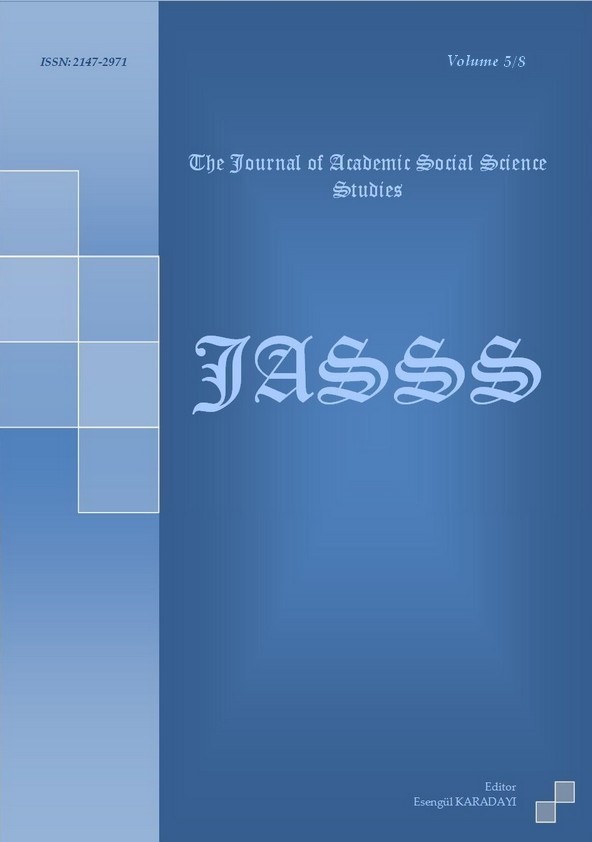BOSNA HERSEK SİYASİ COĞRAFYASINDA GEÇMİŞTEN GÜNÜMÜZE KIYI SINIRINDAKİ DEĞİŞİMLER VE DENİZE ÇIKIŞ SORUNU
Author :
Abstract
Eski haritalarda Bosna Hersek topraklarının denize doğru iki çıkış koridoru mevcuttur; Bunlardan birisi güneybatıda Neum şehri-Klek yarımadası iken ve diğeri ise güneydoğudaki Sutorina Vadisi’dir. Ortaçağdaki Bosna Krallığı’ndan 1947’ye eski Sosyalist Yugoslavya Federasyonu, federatif sınırlarını teşkil edene dek, bu sınırlarda herhangi bir büyük boyutlu ciddi değişim olmamıştır. 500 yıldan daha fazla süredir bu iki kıyı, daima Bosna Hersek toprak bütünlüğü içerisinde kalmıştır. II.Dünya savaşından itibaren Avrupa kıtasında siyasi güçlerin ve bölgesel dengelerin şiddetli bir şekilde değişirken aynı zamanda Bosna Hersek çevresinde de bir çok şey değişmiştir. En çok da sınırları bu tür bir değişimden etkilenmiştir ve bu söz konusu değişim, gelecekteki ciddi sonuçları getirecek bir değişimdir. Pek tabii ki sınırlar siyasi coğrafyanın vazgeçilmez bir öğesidir. Konu “Sınırlar” olduğunda, günümüzde Bosna Hersek içerisinde ve çevresinde bir çok sınır söz konusudur. Bu sınırlar, beşeri coğrafyanın kalitesini ve istikrarını değiştirdiği gibi sakinlerinin kaderini ve vatanlarında hayatta kalma mücadelelerini etkileyen sınırlardır. Ve bu sınırlar bir çok kereler siyasi uzlaşmazlıkların da sebebi ya da anahtar faktörü durumundadır. Günümüzde Bosna Hersek, Adriyatik’te mümkün bir müstakbel ticari liman olabilecek iki kıyısından birinden (Sutorina) yoksun bırakılmış durumdadır. Şu anda bu kıyı, hali hazırda Karadağ kontrolü altındadır. Diğer kıyıda ise hem Fiziki coğrafya ve hem de Siyasi coğrafya unsurlarından kaynaklanan büyük bir sınırlılık söz konusudur. Çünkü bu saha ne bir tesirli deniz limanına sahiptir ne de büyük kısmı Hırvatistan’a ait olan sık konumlanışlı adalar, körfezler, koylar, burunlar zincirinden oluşan Dalmaçya kıyı tipi, Adriyatik denizine doğru serbest bir çıkış sağlamamaktadır. Böylece Bosna Hersek, mevcut kıyılarını kendi ticari amaç ve işlevleri (ithalat ve ihracat) kullanabilecek ve ihtiyaçlarını sağlayabilecek durumda değildir. Bu çalışmada, Bosna Hersek’in kıyı problemlerine ve bunun sahadaki sonuçlarına işaret edilmiş ve bu siyasi kördüğüme yönelik bazı çözüm önerileri verilmiştir.
Keywords
Abstract
Bosnia and Herzegovinian territories in old maps had two corridors of access to the sea; one was in the town of Neum, on the southwest of Klek peninsula and the surrounding region while the other was Sutorina valley on southeast. From the medieval time, while it was called the Kingdom of Bosnia, till 1947 when ex Socialist Federation of Yugoslavia formed federative borders, the borders of Bosnia didn’t undergo serious changes. For more than 500 years, these two coastal areas remained under Bosnia and Herzegovina territory. After World War II, as political powers and local balances changes drastically in European continent, many things around Bosnia & Herzegovina changed as well. Such changes would have serious consequences in the future. Of course, as an indispensable element in political geography, borders represent the areas of authority for countries. When the subject is “Borders”, today in Bosnia and Herzegovina, there are many borders in and around the country. These borders change the quality and stability of human geography and these borders also affect the destiny and struggle to survive for the inhabitants of the country. The borders are time and again the reason or the key element for political discordances as well. Today, Bosnia and Herzegovina has been deprived from one of its two coasts (Sutorina) which can be a possible future trade port on Adriatic coast. Now this coast is currently under the control of Montenegro. As for the other coast (Neum), there a big limitation of physical and political geography elements. Because this area neither has an effective sea port, nor a free access to the Adriatic Sea because of a densely chain of islands located nearby, bays, capes and peninsulas throughout Dalmatian coast which mostly belong to Croatia. So, Bosnia and Herzegovina is unable to use its current coast for its needs (be it trade activities and purposes such as import and export). In this work, I have been trying to indicate the coastal problems of Bosnia and Herzegovina and its consequences on the area. I have also given some solutions about this geopolitical Gordian knot.





